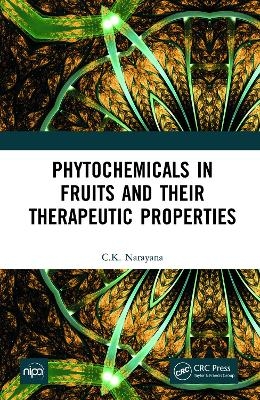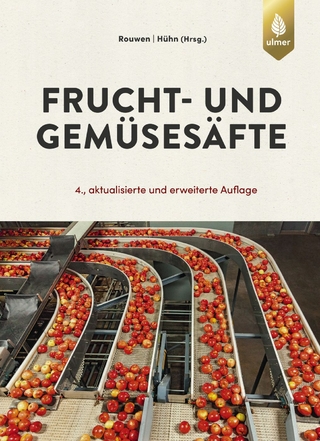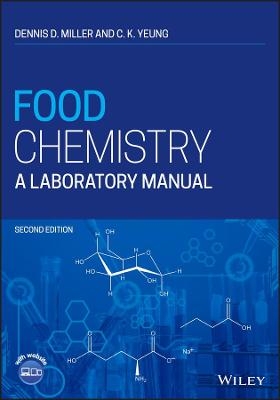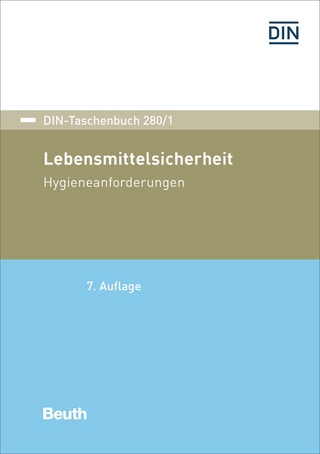
Phytochemicals in Fruits and their Therapeutic Properties
CRC Press (Verlag)
978-1-032-15677-4 (ISBN)
Note: T& F does not sell or distribute the hardback in India, Pakistan, Nepal, Bhutan, Bangladesh and Sri Lanka. This title is co-published with NIPA.
The book provides facts of fruits and their role in curing of diseases with cell line or animal studies and their pharmacological evidence would help the readers to understand the subject in greater depth. It provides information on the subject and will help researchers to carry the interest forward. The book links the traditional knowledge available on each fruit crop regarding their curative properties and the information on their scientific validation. The contents have been organized crop wise in a logical sequence, with references been provided at the end of each chapter for further reading and better understanding of the subject.The book will help the students/ researchers/ scientists and common man alike to look at the fruits as protective foods not just because it is said so, but with a scientific explanation.
Note: T&F does not sell or distribute the hardback in India, Pakistan, Nepal, Bhutan, Bangladesh and Sri Lanka. This title is co-published with NIPA.
C.K. Narayana, ICAR-Indian Institute of Horticultural Research, Karnataka, India
1.Introduction 2. Human Nutrition and Health 3. Fruit Crops as Food and Medicine 4.Aonla (Phyllanthus emblica, Linn (syn.) Emblica officinalis Gaertn) 5.Apple (Malus domestica Linn.) 6.Apricot (Prunus armeniaca Linn.) 7.Avocado (Persea americana Mill.) 8.Bael (Aegle marmelos, Linn.) 9.Banana (Musa sp.) 10.Ber (Zizypus. mauritiana Lam.) 11.Carambola (Averrhoa carambola, Linn.) 12.Cherimoya (Annona cherimola, Mill.) 13.Citrus 14.Custard Apple (Annona squamosa Linn.) 15.Dates (Phoenix dactylifera Linn.) 16.Fig (Ficus carica Linn.) 17.Grapes (Vitis vinefera, Linn.) 18.Guava (Psidium guajava, Linn.) 19.Jackfruit (Artocarpus heterophyllus Lam) 20.Jamun (Syzygium cumini Skeels)21.Kokum (Garcinia indica Linn.) 22.Litchi (Litchi chinensis Sonn.) 23.Longan (Dimocarpus longan Lour) 24.Loquat (Eriobotrya japonica, Lindel) 25.Mango (Mangifera Indica Linn.) 26.Mangosteen (Garcinia mangostana Linn.) 27.Papaya (Carica papaya Linn.) 28.Passion Fruit (Passiflora edulis Sims) 29.Peach (Prunus persica. Linn.) 30.Pear (Pyrus communis. Linn.) 31.Persimmon (Diospyros kaki Linn.) 32.Phalsa (Grewia subinaequalis DC.) 33.Pineapple (Ananas comosus Merr.) 34.Plums and Prunes (Prunus domestica Linn.) 35.Pomegranate (Punica granatum Linn.) 36.Rambutan (Nephelium lappaceum Linn.) 37.Sapota (Manilkara zapota van Royen) 38. Soursop (Bullock’s Heart) (Annona muricata, Linn.) 39. Strawberry (Fragaria X Ananassa. Duch.) 40. Tamarind (Tamarindus indicus, Linn.)
| Erscheinungsdatum | 01.12.2021 |
|---|---|
| Zusatzinfo | 46 Tables, black and white |
| Verlagsort | London |
| Sprache | englisch |
| Maße | 152 x 229 mm |
| Gewicht | 421 g |
| Themenwelt | Technik ► Lebensmitteltechnologie |
| ISBN-10 | 1-032-15677-5 / 1032156775 |
| ISBN-13 | 978-1-032-15677-4 / 9781032156774 |
| Zustand | Neuware |
| Haben Sie eine Frage zum Produkt? |
aus dem Bereich


